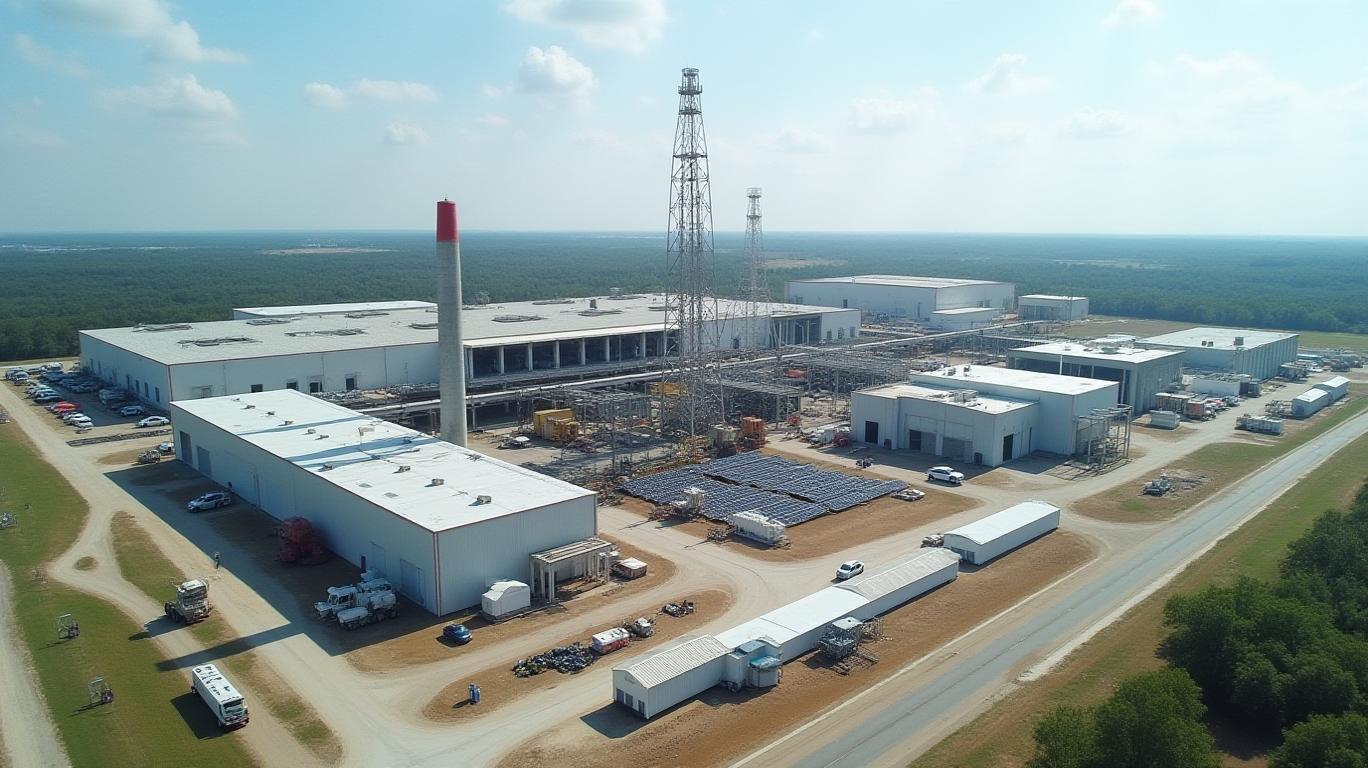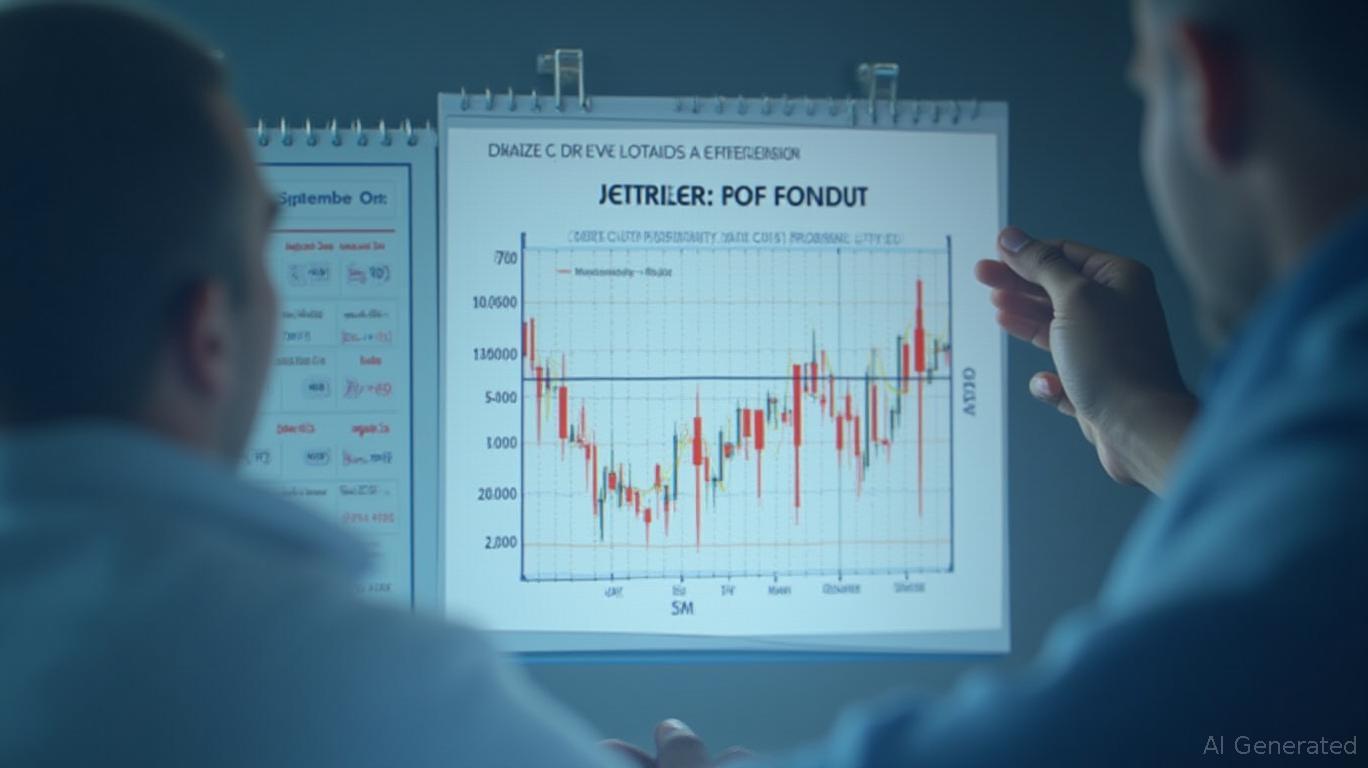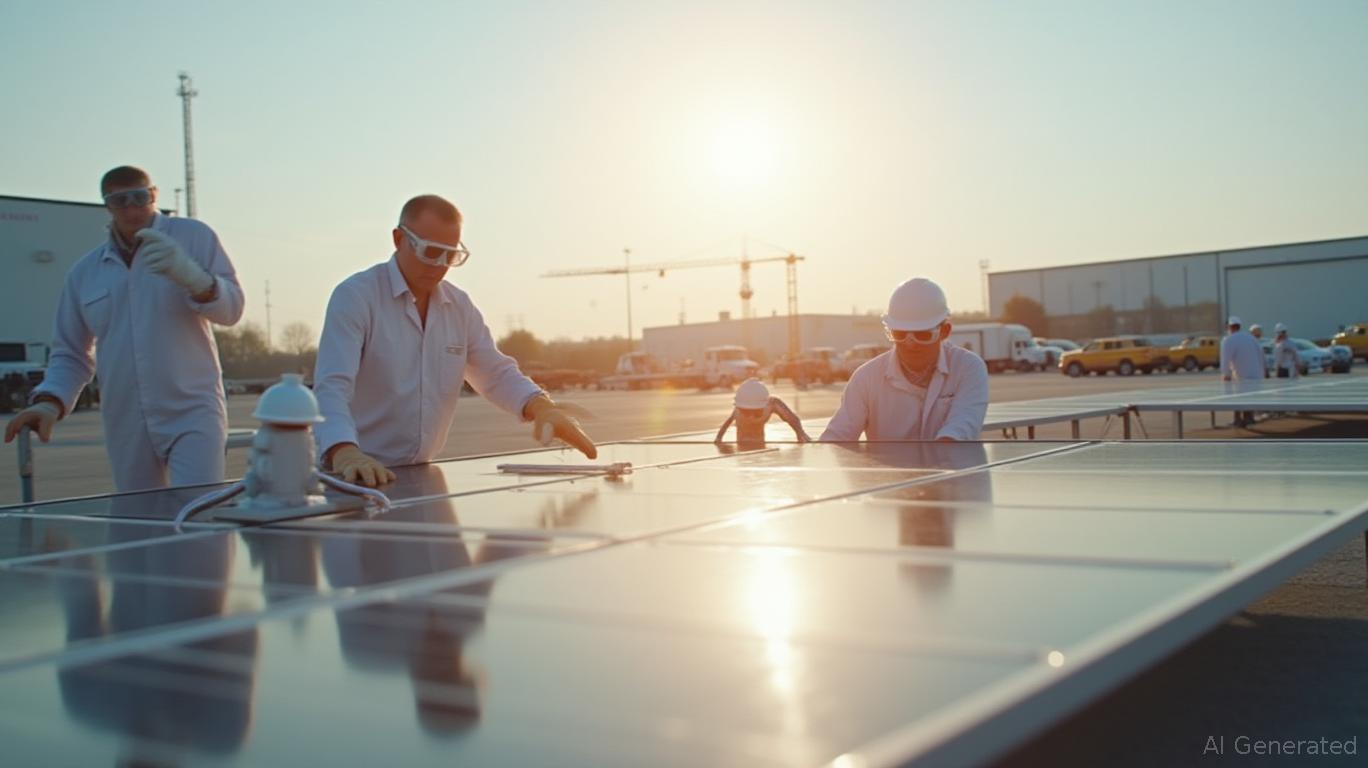First Solar's Revenue Dilemma: Navigating Tariff Uncertainty in 2025
The solar energy sector, once a beacon of growth, is now grappling with unprecedented headwinds as trade policies collide with corporate ambitions. For First Solar (FSLR), a pioneer in thin-film photovoltaic technology, the combination of U.S. tariffs and regulatory uncertainty has cast a shadow over its 2025 financial outlook. Let’s dissect how tariffs are reshaping the company’s trajectory—and whether investors should brace for turbulence or see this as a buying opportunity.
Tariff-Driven Revenue Shock: A $1.3 Billion Drop in Guidance
First Solar’s revised 2025 revenue guidance now sits at $4.5 billion–$5.5 billion, down from an initial $5.3 billion–$5.8 billion range. The culprit? President Trump’s April 2025 tariffs on solar-related products, which introduced a 10% levy on imports. This decision, framed as a “reciprocal” measure targeting countries like India, Malaysia, and Vietnam, has directly impacted First Solar’s manufacturing footprint.

The tariffs have two prongs of impact:
1. Cost Inflation: The 10% tariff adds ~$0.02–$0.03 per watt to module costs, squeezing margins.
2. Operational Risk: First Solar’s plants in Malaysia and Vietnam—which exclusively serve the U.S. market—now face potential shutdowns if tariffs escalate. CEO Mark Widmar warns of $95 million–$220 million in production inefficiencies tied to tariff-driven delays.
The first-quarter results underscore the strain: Net sales plummeted to $844.6 million (down 46% from Q4 2024), with EPS dropping to $1.95, missing estimates by 23%.
Geopolitical Chess: Where the Tariffs Pinch Most
The tariff’s bite is uneven across First Solar’s operations:
- Malaysia/Vietnam: These facilities, critical to U.S. project deliveries, now operate under a Sword of Damocles. If tariffs rise beyond 10%, production could idle, forcing First Solar to reroute supply chains—or absorb losses.
- India: The plant here serves both South Asia and North America, but the 10% tariff complicates cross-border shipments.
- U.S. Manufacturing: While First Solar’s Louisiana facility is tariff-proof, its scale remains limited. Capital expenditures here ate into cash reserves, reducing liquidity from $1.2 billion (end-2024) to $0.4 billion by Q1 2025.
Policy Dependency: The IRA Tax Credit Lifeline
First Solar’s survival hinges on the Inflation Reduction Act (IRA), particularly the Section 45X tax credit, which provides $0.04/watt for domestic solar production. Management estimates $310 million–$350 million in tax credits for Q2 alone, but these benefits are conditional:
- Monetization Timing: If projects are delayed due to tariffs, tax credits could expire unused.
- Policy Risk: Congress’s budget negotiations could dilute IRA provisions, as Oppenheimer notes.
The IRA’s success is a double-edged sword: While it fuels demand for U.S.-made modules, it also amplifies First Solar’s exposure to Washington’s whims.
Oppenheimer’s Bear Case: A 2026 Pivot?
Analysts at Oppenheimer downgraded FSLR to Perform (from Outperform), citing three critical uncertainties:
1. Tariff Duration: The 90-day tariff pause offers no clarity on 2026 rates.
2. Customer Negotiations: Until tariff terms solidify, First Solar can’t finalize cost-sharing agreements with buyers.
3. IRA Gridlock: Federal budget debates could delay IRA benefits, pushing First Solar’s breakeven point further out.
The bear case assumes the lower end of First Solar’s guidance—$4.5 billion revenue and $12.50 EPS—becomes reality. This scenario would slash the company’s stock valuation, especially if the 66.1 GW contracted backlog faces delays.
The Silver Lining: Why Bulls Still See Light
Amid the gloom, First Solar retains structural advantages:
- Vertical Integration: Its U.S. supply chain reduces reliance on tariff-hit regions.
- Technology Lead: Its CadTel-based modules offer efficiency gains, with 22%–24% conversion rates.
- Backlog Strength: $19.8 billion in contracted projects provides a floor for revenue, even if delays occur.
CEO Widmar remains bullish on long-term demand: “The U.S. solar market is still growing at 15–20% annually, and First Solar’s domestic capacity positions us to capture share.”
Conclusion: Navigating the Crossroads
First Solar’s 2025 story is a microcosm of the broader solar sector’s challenges in a protectionist era. The company’s stock, down 29% year-to-date, trades at a 12.8x forward P/E—a discount to its five-year average of 17.3x—reflecting investor skepticism.
However, the $312.48 GuruFocus fair value estimate (127% upside from current prices) suggests the market may be overreacting. For investors, the key variables are clear:
- Tariff Resolution by Q4 2025: A 10% cap would allow First Solar to hit the $5.5 billion revenue midpoint.
- IRA Preservation: Tax credits could add $1.2 billion in annual benefits by 2026.
- Operational Flexibility: Reducing capital expenditures and optimizing inventory could stabilize cash flow.
In the short term, Oppenheimer’s caution is warranted. But for long-term investors willing to bet on U.S. solar dominance, First Solar’s 66.1 GW backlog and $0.9 billion cash reserves provide a foundation to weather 2025’s storms—and thrive in 2026’s calmer seas.
Final Take: Hold for now, but keep an eye on tariff policy updates. If clarity emerges by mid-2025, FSLR could rebound sharply. Until then, this is a “wait-and-see” play.



_183e5bc31749756677125.jpeg)






